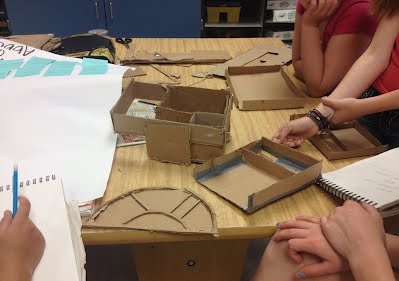The challenge is divided into two age categories: students in grades K-4 and grades 5-12, and teachers can find suggestions for project ideas.
For grades K-4, one of the suggested challenges is, for example, "Where do I put my stuff?"
PROBLEM: Young students struggle to organize and manage their stuff at school
CHALLENGE: Gather materials and objects found in the classroom to then make sense of purpose and usefulness –repeat the process with student’s stuff followed by redesigning the cubby, desk, or locker
CRITICAL QUESTION: What level of impact might this self-directed learning experience have on students compared to a teacher-driven process?
For grades 5-12, a sample challenge is "Transform Time and Space."
PROBLEM: Teenagers in your neighborhood lack a safe place to gather and socialize with friends
CHALLENGE: Target 1-3 viable spaces that are underutilized and within walking distance – then generate a design proposal that serves the local community and is financially sound for the owner
CRITICAL QUESTION: What kind of transformation design would serve the local community as well as provide a compelling and long-term solution for teenagers and space owner?
But competitors are expected ultimately to define their own parameters, with this five-step process:
- EXPLORE concepts, skills, and terminology common to industrial design. Also, address how to harness natural curiosity and transform it into a design project.
- DESCRIBE the challenge identified, as well as the criteria used to judge whether the project is proceeding successfully. This description happens through the creation of visual displays such as posters and storyboards, and the conducting of interviews of community members to help identify the challenge and potential ways to solve it.
- EXPLAIN how the challenge will be addressed, how the project could evolve mid-stream, and what realistic expectations are for a result. This may be a good opportunity to bring in a real-world expert to give students advice.
- DEMONSTRATE the project in process by creating a Google Site to act as a homepage, where students record and evaluate their work and the challenge’s competition jury can survey student work.
- EVALUATE project results and design concept learning. Consider what changes students and the teacher might implement during a redesign, as well as how lessons learned from the project might apply to other school subjects and/or life situations.
Students in this year’s challenge have already submitted their work for steps 1-3. Steps 4-5 are due on May 15. The submissions are evaluated by a jury of design professionals and college professors.
There are also plans to allow teachers interested in the concept—but hesitant to commit the necessary time investment to fully enroll in the challenge—to choose a less intensive category of competition. That would potentially help interested teachers who Wells-Papanek says have sometimes come to her for assistance after trying to dive too deep into the competition.
“They get excited about it and they want to accomplish more than is realistic,” she said of some of the challenge's participating teachers. “I help them to make sure the challenges they take on are as realistic as possible.”


